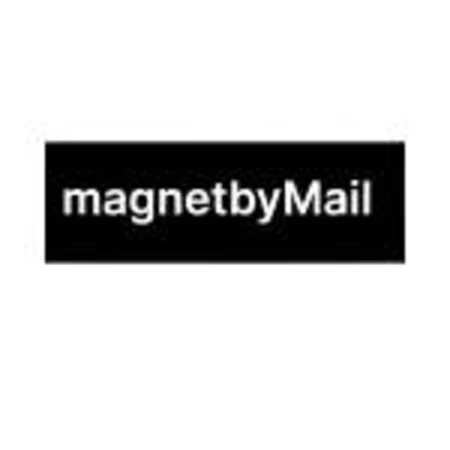In the evolving world of direct marketing, businesses constantly look for creative ways to stand out and maintain meaningful engagement with their customers. Printed materials, once thought to be overshadowed by digital channels, continue to prove their value when designed with innovation and purpose. Among these, the postcard with removable magnet has gained recognition as a practical and versatile communication tool that bridges the gap between traditional and modern marketing methods.
These hybrid mailers combine the simplicity of a printed postcard with the utility of a detachable magnet, offering a dual-purpose design that engages recipients in multiple ways. They provide a tactile, memorable experience while also serving as a long-term reminder of the sender’s message, service, or event.
This article explores the concept, structure, benefits, and uses of postcards with removable magnets, along with insights into why they remain a relevant and effective medium in today’s marketing landscape.
1. Understanding the Concept
A postcard with a removable magnet is exactly what its name suggests — a traditional paper postcard integrated with a detachable magnetic section. The magnet is typically die-cut and attached securely to the postcard, often through an adhesive or perforation system that allows it to be easily removed without damaging the overall design.
The magnetic portion can include key information such as contact details, business logos, calendars, schedules, or promotional reminders. Once detached, recipients can place the magnet on a refrigerator, filing cabinet, or any magnetic surface. This ensures that the sender’s message remains visible long after the postcard itself has been read or discarded.
2. The Design and Production Process
Designing a postcard with a removable magnet requires a thoughtful approach that balances visual appeal, information clarity, and functionality. The process usually involves several steps:
- Layout planning: The postcard must accommodate both the printed message and the magnet placement. Designers often allocate a specific area that integrates seamlessly with the overall artwork.
- Magnet creation: The detachable magnet is printed with durable inks and covered with a protective layer to ensure long-term usability.
- Attachment method: The magnet is affixed using an adhesive or is die-cut to pop out easily. High-quality adhesives are used to prevent premature detachment during mailing.
- Printing and finishing: The postcards are printed using premium cardstock to maintain stiffness and withstand the postal system’s handling.
When done correctly, the result is a compact and functional mailer that feels premium yet accessible, capable of conveying professionalism and creativity.
3. Advantages of Using Postcards with Removable Magnets
While digital communication dominates modern marketing, tangible materials still hold unique advantages. Postcards with removable magnets offer benefits that go beyond traditional paper mailers.
a. Longevity of Message
Unlike flyers or standard postcards, which are often discarded after a quick read, a magnetic postcard’s detachable section serves a practical purpose. When recipients display the magnet in their homes or offices, the sender’s message stays visible for months or even years.
b. Multi-Functional Utility
Magnets can feature useful content such as calendars, emergency contact numbers, or event reminders. Because recipients often keep items that serve a daily purpose, this increases engagement and retention.
c. Enhanced Recall Value
Studies in marketing psychology show that physical interactions with tangible materials enhance memory retention. The tactile experience of removing and placing a magnet reinforces brand recall and increases the likelihood of future interaction.
d. Cost-Effective and Measurable
Compared to other forms of advertising, such as TV or digital ads, magnetic postcards offer a cost-efficient alternative for targeted local marketing. They can be distributed via direct mail, trade shows, or in-store promotions and can be easily tracked through coupon codes or unique URLs.
e. Versatility Across Industries
This medium is not restricted to a particular field. From healthcare providers sending appointment reminders to schools sharing academic calendars or real estate professionals promoting listings, almost any organization can adapt this format to its communication goals.
4. Common Applications
The use cases for postcards with removable magnets are broad and diverse. Their adaptability makes them suitable for both commercial and non-commercial communication.
Here are a few common examples:
- Local Business Marketing: Small and mid-sized businesses often use these postcards to introduce seasonal offers, service schedules, or loyalty programs.
- Healthcare and Dental Offices: Clinics use them to send appointment reminders or health tips, with the magnet displaying contact numbers or office hours.
- Real Estate Agents: Property agents distribute magnets featuring their contact details or a mini-calendar to ensure potential clients can easily reach them.
- Educational Institutions: Schools and universities share academic calendars or event reminders, allowing parents and students to keep essential dates visible.
- Community Services: Non-profits, churches, or civic organizations use these mailers for event invitations, donation campaigns, or awareness drives.
- Corporate Branding: Companies can include them in welcome kits, employee appreciation gifts, or customer correspondence as a subtle brand reinforcement.
In all these cases, the magnetic postcard serves a dual purpose delivering an immediate message and ensuring long-term visibility.
5. Environmental Considerations
Sustainability has become an essential factor in modern print marketing. As more organizations strive to reduce their environmental footprint, production choices for postcards with removable magnets have evolved.
Manufacturers now offer eco-friendly printing options, such as recycled paper stock and soy-based inks, to minimize environmental impact. Some also use thin, flexible magnets made from recyclable materials or biodegradable adhesives.
Businesses that prioritize sustainability can further enhance their image by including small messages about eco-conscious practices on their mailers. This approach not only supports environmental responsibility but also resonates positively with environmentally aware audiences.
6. Integrating with Digital Marketing
Although postcards with magnets are tangible marketing tools, they can easily complement digital strategies. Including QR codes, personalized URLs, or social media handles on the design helps bridge the gap between physical and digital engagement.
For example:
- A QR code can direct recipients to an online booking system or promotional webpage.
- A unique URL can help track response rates and analyze the effectiveness of each mailing campaign.
- Social media links encourage recipients to connect or follow for future updates.
This integrated approach allows businesses to create a cohesive experience, combining the credibility of physical materials with the convenience of digital follow-ups.
7. Key Design Tips for Effective Results
Creating a postcard with a removable magnet requires careful consideration of layout and content. Below are a few design principles that enhance impact:
- Prioritize clarity: Keep messages short and focused. The magnet area should feature key information such as a phone number, logo, or tagline.
- Use contrasting colors: This helps distinguish the magnet visually while maintaining harmony with the overall design.
- Maintain brand consistency: Use consistent fonts, colors, and tone to align with other marketing materials.
- Include a clear call to action: Encourage recipients to use or keep the magnet — for example, “Place this calendar on your fridge for quick access.”
- Ensure durability: Opt for quality materials and finishes to prevent wear during mailing or handling.
Good design ensures that the postcard achieves both visual appeal and long-term usability.
8. The Psychological Appeal of Tangible Marketing
Despite the digital shift, tangible marketing materials continue to outperform expectations. Physical objects engage multiple senses — sight, touch, and even the subtle sound of detaching a magnet — which creates stronger emotional and cognitive connections.
The brain processes tactile experiences differently from digital impressions. When a person physically interacts with an item, it activates deeper memory centers. In marketing terms, this translates into higher brand recognition and stronger emotional recall.
A postcard with a removable magnet takes advantage of this psychological principle. It transforms a brief marketing interaction into an ongoing visual reminder that reinforces familiarity and trust.
9. Challenges and Considerations
Like any marketing tool, this format also has limitations that must be addressed thoughtfully:
- Mailing Costs: Slightly heavier than standard postcards, these may require additional postage.
- Design Complexity: The inclusion of a detachable element requires precise layout and print alignment.
- Production Time: Custom magnetic designs can extend lead times compared to simple postcards.
However, with proper planning and professional printing, these challenges can be easily managed, ensuring consistent quality and timely delivery.
10. Conclusion
The postcard with removable magnet exemplifies how traditional print marketing continues to evolve through innovation. It merges the familiarity of a paper-based message with the functionality of a magnetic keepsake, offering an effective balance of creativity and practicality.
For organizations that value sustained visibility and meaningful engagement, this medium provides a tangible way to communicate beyond a single moment of attention. Its versatility, longevity, and sensory appeal make it an enduring choice in an era where personal connection and memorability remain key to successful communication.



